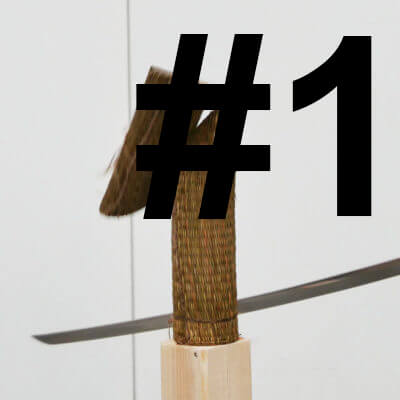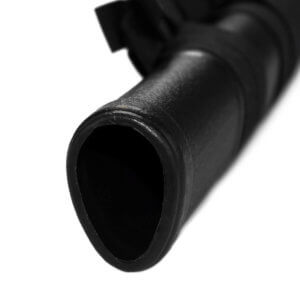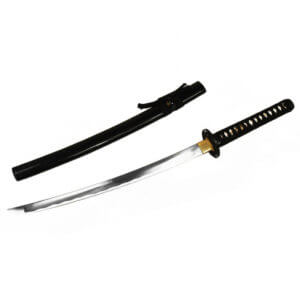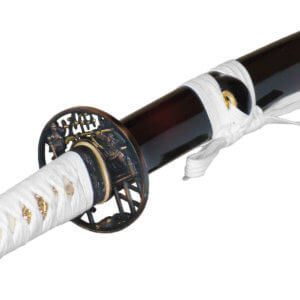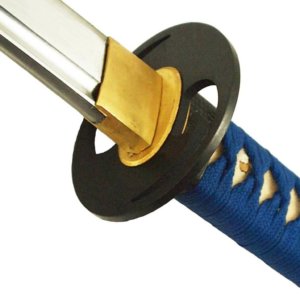Foreword
We are often asked a wide variety of questions about cutting tests with swords. Cut tests are also known under the Japanese name Tameshigiri. If you would like to find out more about the ancient Tameshigiri, we recommend the book "Tameshigiri - The History and Development of Japanese Sword Testing" by Markus Sesko.
In this tutorial, we will look at the modern way of cutting tests, often called Shito (試刀) and Shizan (試斬), which is all about seeing your own sword "in action" and making the perfect cut. There are a few details to consider to ensure that the whole process is safe. As always, we recommend a nearby martial arts school from our Register to look for.
In Part 1, we look at the most widespread myths.
Myth 1: Tameshigiri may only be performed by masters
The ancient tameshigiri was performed to test the quality of a blade. For this reason, only extremely experienced swordsmen were allowed to carry out the cutting exercises to ensure that the initial situation was consistent and that the quality of the blade really determined the outcome of the cutting exercise and not the individual skill of the person carrying out the cutting test. This is why myth 1 persists to this day.
It is true today that Tameshigiri is performed by advanced martial artists in many sword fighting arts and not at all in some martial arts.
The reason often given for this is that the tests are too dangerous for beginners or that it is only technically possible for masters to cut a target.
But in our opinion, this is a misinterpretation of the situation. When learning a martial art, the first step is to learn proper basic techniques. If you want to reach a high level in a particular sword martial art, you should not start with tameshigiri exercises too early, because the focus then quickly shifts to cutting the mat instead of learning the technique properly.
However, it is by no means only reserved for master craftsmen to carry out cutting tests. Quite the opposite. Today, it is mainly amateur sportsmen and women who enjoy carrying out pruning tests.
Myth 2: Tameshigiri is dangerous
Every now and then you read that practising tameshigiri is extremely dangerous. However, if a few simple basic rules are followed, the cutting test is actually relatively safe. Just as you don't hurt yourself when handling a sharp kitchen knife if you pay attention to certain details.
This includes simple things such as choosing the right sword and some basic rules, which are explained later in the tutorial.
Personal experience or skill is not a necessary prerequisite for the safe performance of cutting tests if the important details are observed.
Myth 3: Tameshigiri can destroy a sword quickly
Normally you cut a tatami omote mat (bound rice straw) with a steel blade. It is therefore relatively unlikely that the metal blade will "shatter" on the rice straw mat. Nevertheless, you should pay attention to the following points:
Quality of the sword:
Swords that are unevenly hardened or of inadequate steel quality can break during cutting tests. Suitable swords do not even have to cost very much. For 250 to 400 euros, you can get an entry-level sword of acceptable quality that is already suitable for cutting tests.
Cutting goals that match your own skills:
There are different cutting targets for cutting exercises. The harder the target, the greater the strain on the blade. As a beginner, you should therefore start with the softest possible targets and then work your way up.
Simple techniques:
There are cuts with different levels of difficulty. More on this later in the tutorial. For the sake of the sword, you should only perform the techniques that correspond to your own learning progress.
Example with analysis:
Here's an example from the internet of how not to do it. There are lots of them on YouTube.
Quality of the sword: unknown
Unfortunately, you can't see exactly what the quality of the blade is like in the video.
Cut finish: Tatami Omote
The cutting target looks like a normal, wrapped mat made of rice straw.
Technology: Ambitious
As a technique, the person has chosen a double cut, which is one of the more difficult techniques. And that with one hand!
Let's see what happens:
Brief analysis:
During the first cut, the blade is held at a poor angle. You can already see that the blade is held relatively horizontally compared to the cutting direction during the last cut.
When cutting, the target is even cut, but due to the poor angle, the cutting target tilts forwards and the blade swings very strongly.
That would have been a good moment to cancel the attempt. The practitioner has apparently set himself the goal of pulling off his technique with Japanese single-mindedness no matter what.
The second cut is made with a flat cutting angle, which means a higher load on the blade. Because the target is tilted, the blade hits the cutting target relatively in the centre and not in the front third, which is actually intended for cutting.
In combination with the fact that the blade is still vibrating from the first cut, this is definitely too much for the blade and it breaks.
We can only hope that it was not really a 5000 US dollar sword, as the author of the video claims. It broke quite quickly under a comparatively low load. It is better to use modern, inexpensive swords for cutting exercises than historical originals. Unless you already have a very good technique or you can really afford to suffer a very expensive loss.

